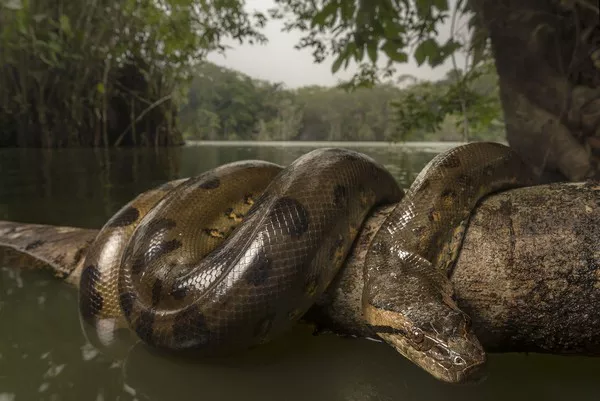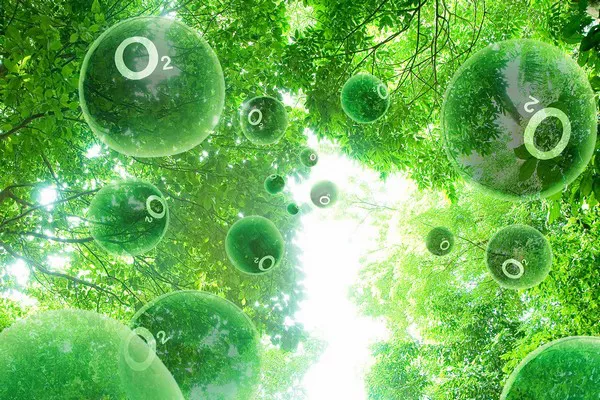Snakes have long fascinated and terrified humans, with their slithering movements and venomous bites. Among the vast array of snake species, some stand out for their potent venom and deadly capabilities. In this comprehensive exploration, we delve into the mysterious world of the top 20 deadliest snakes, examining their unique traits, habitats, and the impact they have on the ecosystems they inhabit.
Venom Composition and Function:
Neurotoxic Venom: Some snakes, like the inland taipan, possess neurotoxic venom that targets the nervous system, causing paralysis and respiratory failure.
Hemotoxic Venom: Others, such as the saw-scaled viper, deploy hemotoxic venom that affects blood clotting and can lead to organ failure.
Cytotoxic Venom: Certain species, like the Gaboon viper, employ cytotoxic venom that damages cells and tissues, resulting in local pain and swelling.
Combination Venom: Many snakes have a combination of venom components, making their effects complex and varied.
Top 20 Deadliest Snakes in the World
1. Inland Taipan (Oxyuranus microlepidotus):
Known as the “fierce snake” or “small-scaled snake,” the Inland Taipan holds the title of the most venomous snake in the world. Inhabiting central Australia, its venom can cause rapid paralysis and is estimated to be 50 times more potent than that of the Indian cobra.
Habitat: Arid regions of Australia.
Venom Type: Highly potent neurotoxic venom.
Notable Fact: Often regarded as the world’s most venomous snake.
2. Belcher’s Sea Snake (Hydrophis belcheri):
Found in the waters of Southeast Asia and Northern Australia, Belcher’s Sea Snake possesses a highly toxic venom that targets the nervous system. Despite its lethality, human encounters are rare due to its deep-sea habitat.
Habitat: Coastal waters of the Indian Ocean.
Venom Type: Highly potent neurotoxic venom.
Notable Fact: Capable of staying submerged for long periods.
3. Coastal Taipan (Oxyuranus scutellatus):
Native to Australia’s coastal regions, the Coastal Taipan boasts potent neurotoxic venom. While bites are infrequent, they are extremely dangerous and can result in respiratory failure if not treated promptly.
Habitat: Coastal regions of northern Australia.
Venom Type: Extremely potent neurotoxic venom.
Notable Fact: Possesses a lightning-fast strike.
4. Black Mamba (Dendroaspis polylepis):
Known for its speed and aggression, the Black Mamba is found in Eastern and Southern Africa. Its venom, composed of neurotoxins and cardiotoxins, can cause paralysis and lead to death within hours if left untreated.
Habitat: Savannas and rocky areas of sub-Saharan Africa.
Venom Type: Potent neurotoxic and cardiotoxic mix.
Notable Fact: One of the fastest and most aggressive snakes.
5. Death Adder (Acanthophis spp.):
The Death Adder, native to Australia and New Guinea, employs a unique hunting strategy. Its venom, a powerful cocktail of neurotoxins, can cause paralysis and respiratory failure.
Habitat: Australia, New Guinea.
Venom Type: Fast-acting neurotoxic venom.
Notable Fact: Ambush predator with a unique hunting strategy.
6. Many-Banded Krait (Bungarus multicinctus):
Widely distributed in Southeast Asia, the Many-Banded Krait possesses potent neurotoxic venom. Its nocturnal habits and cryptic coloration make it a formidable predator, and its bite can lead to respiratory failure.
Habitat: Southeast Asia, China, and Taiwan.
Venom Type: Powerful neurotoxic venom.
Notable Fact: Mainly nocturnal and highly venomous.
7. Russell’s Viper (Daboia russelii):
Found in Asia, Russell’s Viper is responsible for numerous snakebite fatalities. Its venom induces a range of effects, including tissue necrosis, coagulopathy, and renal failure.
Habitat: Asia, from India to Southeast Asia.
Venom Type: Hemotoxic with coagulant properties.
Notable Fact: A significant contributor to snakebite fatalities.
8. Philippine Cobra (Naja philippinensis):
Endemic to the Philippines, this cobra species delivers potent neurotoxic venom. Known for its spitting ability, it poses a significant threat to humans due to its aggressive nature and proximity to populated areas.
Habitat: The Philippine Cobra, Naja philippinensis, is native to the Philippines.
Venom Type: Possessing potent neurotoxic venom, the Philippine Cobra’s bite can lead to respiratory failure, necessitating immediate medical attention.
Notable Fact: Renowned for its hood and unique spitting behavior, this cobra can accurately project its venom towards potential threats, including predators or perceived dangers.
9. Saw-Scaled Viper (Echis carinatus):
Distributed across Africa, the Middle East, and the Indian subcontinent, the Saw-Scaled Viper is notorious for its aggressive behavior and lethal hemotoxic venom, causing extensive tissue damage and coagulopathy.
Habitat: Arid regions of the Middle East, Africa, and Asia.
Venom Type: Hemotoxic with coagulant properties.
Notable Fact: Responsible for numerous snakebite fatalities.
10. King Cobra (Ophiophagus hannah):
The largest venomous snake, the King Cobra inhabits Southeast Asia. While its venom is potent, it is not as toxic as some others on this list. However, its size and aggression make it a formidable predator.
Habitat: Forested areas of Southeast Asia.
Venom Type: Potent neurotoxic venom.
Notable Fact: The world’s longest venomous snake.
11. Gaboon Viper (Bitis gabonica):
Residing in the rainforests of sub-Saharan Africa, the Gaboon Viper boasts the longest fangs of any snake. Its venom, a mix of hemotoxins and cytotoxins, causes severe tissue damage and can be fatal without prompt medical attention.
Habitat: The Gaboon Viper, Bitis gabonica, thrives in the dense rainforests and swamps of Central and West Africa.
Venom Type: Known for its potent cytotoxic venom, the Gaboon Viper possesses a sophisticated venom delivery system.
Notable Fact: The Gaboon Viper boasts the longest fangs of any snake, reaching up to 2 inches in length.
12. Blue Krait (Bungarus candidus):
Widespread in Southeast Asia, the Blue Krait possesses potent neurotoxic venom. Despite its docile appearance, it is responsible for numerous snakebite fatalities in the region.
Habitat: Southeast Asia, Indonesia, and Malaysia.
Venom Type: Potent neurotoxic venom.
Notable Fact: Recognizable by its distinctive black and white bands.
13. Papuan Taipan (Oxyuranus scutellatus canni):
Endemic to Papua New Guinea, the Papuan Taipan is a subspecies of the Coastal Taipan. Its venom is highly potent, causing rapid paralysis and respiratory failure.
Habitat: Papuan Taipans inhabit the tropical forests and grasslands of Papua New Guinea.
Venom Type: Possessing potent neurotoxic venom, Papuan Taipans pose a serious threat with rapid-acting toxins affecting the nervous system.
Notable Fact: Renowned as one of the world’s deadliest snakes, Papuan Taipans display remarkable agility and deliver swift, lethal strikes.
14. Puff Adder (Bitis arietans):
Native to Africa, the Puff Adder is responsible for the majority of snakebite fatalities on the continent. Its cytotoxic venom induces severe tissue necrosis, and its ambush hunting style makes it a common encounter.
Habitat: Savannas and grasslands of Africa.
Venom Type: Powerful cytotoxic venom.
Notable Fact: Known for its distinctive hissing sound.
15. Monocled Cobra (Naja kaouthia):
Distributed across Southeast Asia, the Monocled Cobra delivers potent neurotoxic venom. Known for its iconic “monocle” pattern on its hood, it poses a significant threat to humans due to its proximity to populated areas.
Habitat: The Monocled Cobra, Naja kaouthia, thrives in diverse habitats, including forests, grasslands, and agricultural areas across Southeast Asia.
Venom Type: Possessing potent neurotoxic venom, the Monocled Cobra’s bite can lead to respiratory failure and requires prompt medical attention.
Notable Fact: Marked by a distinct “monocle” pattern on its hood, this cobra is known for its striking appearance and defensive behavior when threatened.
16. Fer-De-Lance (Bothrops asper):
Found in Central and South America, the Fer-De-Lance is one of the most dangerous pit vipers. Its hemotoxic venom causes extensive tissue damage and can lead to severe complications if not treated promptly.
Habitat: Central and South America.
Venom Type: Hemotoxic with a range of toxic effects.
Notable Fact: Responsible for a significant number of snakebite incidents.
17. Tiger Snake (Notechis spp.):
Endemic to Australia, the Tiger Snake is notorious for its aggressive behavior and potent neurotoxic venom. Bites can lead to paralysis and respiratory failure, requiring immediate medical intervention.
Habitat: Southern regions of Australia.
Venom Type: Complex mix of neurotoxic and hemotoxic components.
Notable Fact: Variable in color and highly venomous.
18. Green Mamba (Dendroaspis angusticeps):
Inhabiting the rainforests of East Africa, the Green Mamba is a highly venomous snake with potent neurotoxic venom. Despite its vibrant green coloration, it is elusive and poses a significant threat to humans.
Habitat: African rainforests and coastal regions.
Venom Type: Potent neurotoxic venom.
Notable Fact: Exceptional tree climbers; swift, agile, and highly venomous.
19. Indian Krait (Bungarus caeruleus):
Found across the Indian subcontinent, the Indian Krait is responsible for a significant number of snakebite fatalities. Its venom induces paralysis, and bites often occur during nighttime, adding to the challenges of prompt medical intervention.
Habitat: Indian subcontinent, often found in rural and urban areas.
Venom Type: Neurotoxic, causing paralysis and respiratory failure.
Notable Fact: Highly venomous; responsible for nocturnal, potentially fatal bites.
20. Western Diamondback Rattlesnake (Crotalus atrox):
Native to North America, the Western Diamondback Rattlesnake is one of the most venomous pit vipers. Its hemotoxic venom causes tissue necrosis and can lead to severe complications if not treated promptly.
Habitat: Arid regions, deserts, and grasslands of North America.
Venom Type: Hemotoxic venom causing tissue damage and coagulation issues.
Notable Fact: Recognizable by diamond-shaped patterns and rattling tail warning.
Conclusion:
As we conclude our exploration of the top 20 deadliest snakes in the world, it’s crucial to acknowledge the importance of snakebite awareness, prevention, and medical treatment. While these snakes evoke fear and fascination, understanding their behavior and habitats can contribute to coexisting with these remarkable creatures. Through education and conservation efforts, we can mitigate the risks associated with venomous snakes and appreciate the vital role they play in maintaining ecological balance.
You Might Be Interested In:






















